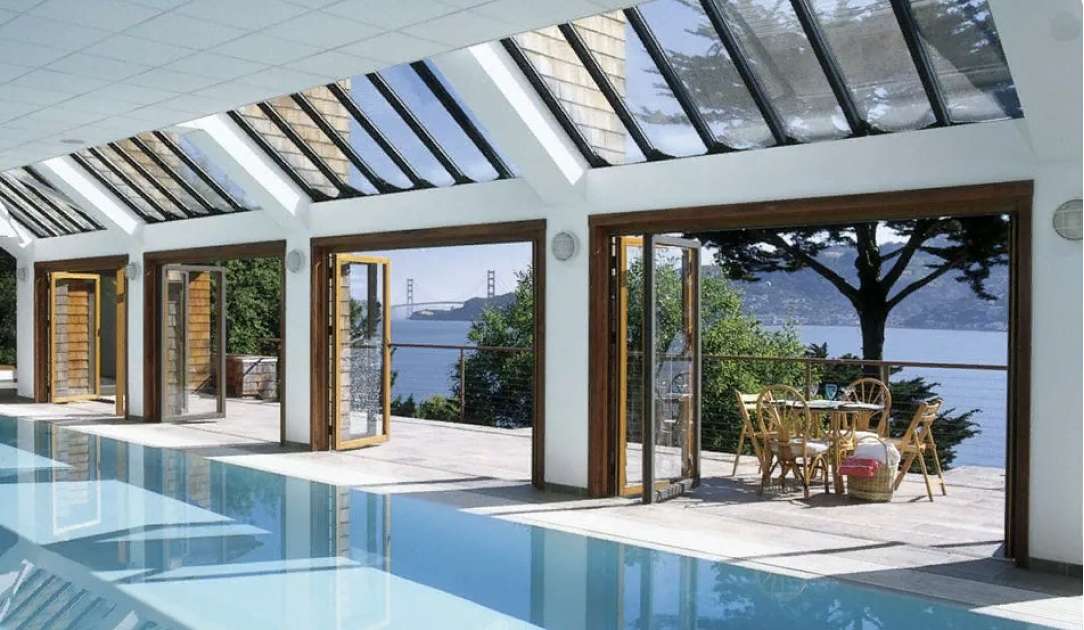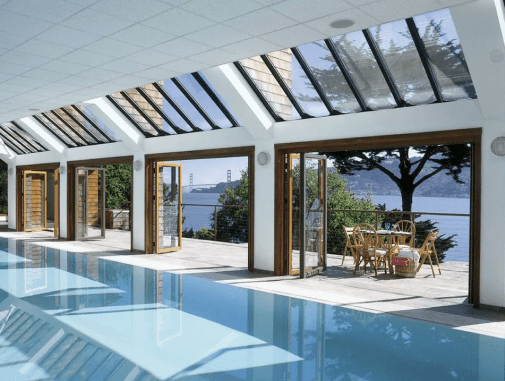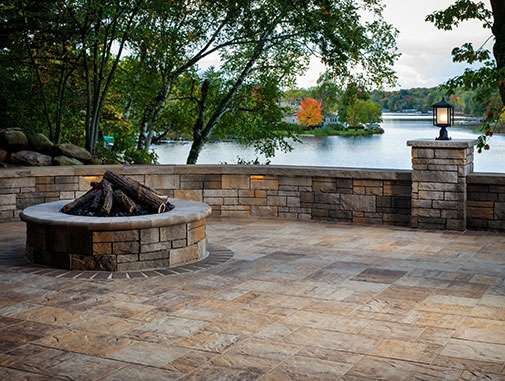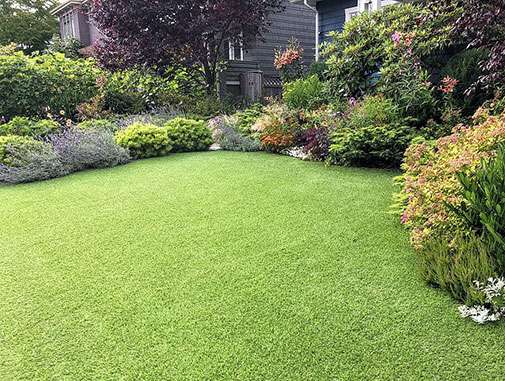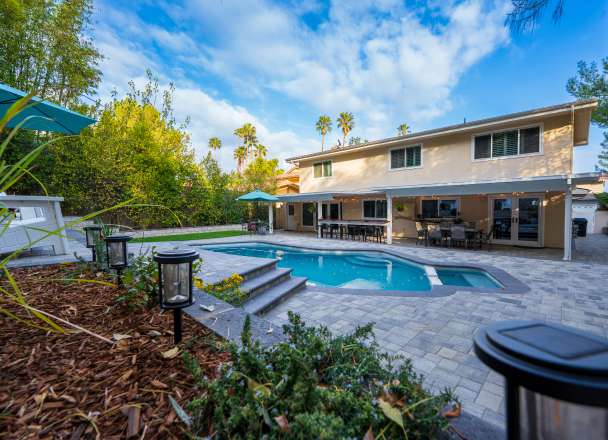ADUs as a Solution for Affordable Housing
- #Outdoor Living
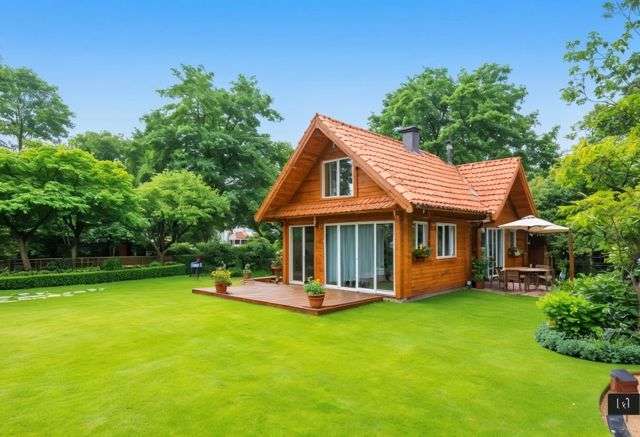
- Smooth Plaster Finish
- Shimmering Pebble Finish
ADUs provide affordable housing options by utilizing existing spaces, making them cost-effective. They offer flexibility for multigenerational families and generate rental income without compromising the privacy of the main house.
Introduction to ADUs and Affordable Housing
Accessory Dwelling Units (ADUs) are smaller homes built on the same lot as a single-family house. They can be standalone structures, garage conversions, or basement apartments, each having a separate kitchen, bathroom, and sleeping area, making it an independent space.
The need for affordable housing is rising, especially in urban areas where living costs are high. Many households, both renters and owners, spend more than 30% of their income on housing, making them cost-burdened. This issue is particularly challenging for older adults who need accessible living spaces.
ADUs offer a practical solution:
- Smaller and more affordable than standalone homes.
- Ideal for multigenerational families, providing close and affordable housing options.
- A way to generate extra income through rentals without compromising the privacy of the main house.
Building an ADU can cost significantly less than constructing a new single-family home. Internal ADUs, like basement conversions, can be more budget-friendly compared to detached units.
In conclusion, ADUs can enhance housing stability and offer a viable solution for affordable housing needs, benefiting low-income households and providing accessible options for older adults.

Economic Benefits of ADUs for Homeowners
ADUs are proving to be a smart investment for homeowners. These units, also known as granny flats or backyard cottages, provide numerous financial advantages. One of the primary benefits is the additional rental income they can generate. This extra income can significantly offset the cost of homeownership and even cover mortgage payments and property taxes.
ADUs also enhance property value. They are desirable in the real estate market, especially when located in sought-after neighborhoods and built with high-quality materials and modern features, making ADUs a beneficial long-term investment.
Homeowners have various financing options for ADU construction, including home equity loans and government-backed loans. These options make the initial expense more manageable, especially if considering prefab or modular ADUs which can be more cost-effective.
ADUs offer flexible living solutions:
- Rental income generation: ADUs provide a separate living space for tenants.
- Home office or studio: An ideal space for remote work or creative projects.
- Affordable housing: They utilize existing space, posing a cost-effective alternative to new buildings.
Real-world Examples:
- Garage conversions: Unused garages transformed into cozy living spaces.
- Granny flats: Allowing elderly parents to live close while maintaining independence.
- Backyard studios: Creating rental income streams with well-designed separate entrances and amenities.
In summary, investing in an ADU can offer homeowners significant economic benefits, including increased property value and additional income, while also providing flexible and sustainable housing solutions.
Planning and Zoning Regulations for ADUs
Accessory Dwelling Units (ADUs) have specific regulations that homeowners must follow to blend well into communities and meet local standards.
Key zoning regulations include:
- Owner-occupancy requirements: Many areas require the property owner to live in either the main house or the ADU.
- Design and dimensional standards: ADUs must comply with local design guidelines, including height, size, and setback requirements.
- Off-street parking: Some jurisdictions mandate additional parking spaces for ADUs.
Recent legislative changes have aimed to simplify ADU development. Many cities now allow ADUs by right in single-family zones, removing the need for special permits if certain conditions are met. Some states even require local governments to adopt more permissive zoning laws to promote ADU construction.
Communities also offer amnesty programs for unpermitted ADUs, waiving penalties and fees to encourage homeowners to bring these units into compliance, ensuring they meet safety and quality standards.
When planning an ADU, homeowners should:
- Check local zoning laws for specific requirements.
- Consult with the local Planning and Development Department.
- Ensure the proposed ADU meets all design, size, and parking requirements.
Understanding and adhering to these regulations can make the process of building an ADU smoother and more efficient, helping to increase the availability of affordable housing in the community.

ADUs in Addressing Housing Shortage
ADUs have become a popular strategy in addressing housing shortages, especially in high-demand urban areas. By adding smaller independent units on the same property as single-family homes, ADUs offer numerous benefits:
- Quick Construction: They can be built relatively fast.
- Cost Efficiency: Existing infrastructure is used, reducing development costs.
- Urban Sprawl Reduction: ADUs minimize the need for urban sprawl.
- Income Opportunities: Homeowners can earn additional income by renting out ADUs.
Specific Case Studies:
- In Portland, Oregon, garage conversions have provided affordable rental options within residential neighborhoods.
- In Los Angeles, California, backyard studios have become popular for generating extra rental income.
However, there are challenges associated with ADUs. Critics argue that ADUs can create two-tiered neighborhoods, where tenants often live in back-facing units with limited social interaction, leading to social isolation and reinforcing financial inequalities.
Alternative housing types, like duplexes and small apartments, offer more equitable solutions. These options enhance community interaction with street-facing designs. Cities like Minneapolis and areas in California have begun to implement such reforms by relaxing single-family zoning laws.
Despite the promise of ADUs, their high construction costs and financing difficulties limit their accessibility for many, particularly low- and medium-income homeowners. ADUs often benefit wealthier individuals, making them less suitable as a standalone solution for the housing crisis.
For a more comprehensive approach to housing shortages, strategies should include varied housing types and extensive development in strategic locations like downtown areas and transit nodes. This ensures a significant boost in housing stock and supports vibrant communities.
In conclusion, while ADUs play a crucial role in addressing housing shortages, a balanced approach incorporating diverse housing solutions and thoughtful urban planning is essential for sustainable and inclusive development. Explore more about ADUs and other innovative housing solutions with EHD Builders.

FAQ
What is an Accessory Dwelling Unit (ADU)?
Accessory Dwelling Units (ADUs) are smaller homes built on the same lot as a single-family house. They can be standalone structures, garage conversions, or basement apartments, and each ADU has a separate kitchen, bathroom, and sleeping area.
Why are ADUs considered a solution for affordable housing?
ADUs are smaller and more affordable than standalone homes, making them ideal for multigenerational families and generating extra income through rentals. They provide a cost-effective way to increase housing options without compromising the privacy of the main house.
How much does constructing an ADU cost compared to a new single-family home?
Building an ADU can cost significantly less than constructing a new single-family home. Internal ADUs, like basement conversions, can be more budget-friendly compared to detached units.
What economic benefits do ADUs offer to homeowners?
ADUs can generate rental income, enhance property value, and provide various flexible living solutions like home offices or affordable housing options. They are considered a beneficial long-term investment due to their desirability in the real estate market.
What financing options are available for ADU construction?
Homeowners can explore various financing options such as home equity loans and government-backed loans to make the initial expense of building an ADU more manageable. Prefab or modular ADUs can also be more cost-effective.
What are the key zoning regulations for ADUs?
Key zoning regulations for ADUs include owner-occupancy requirements, design and dimensional standards, and off-street parking mandates. These regulations help ensure that ADUs blend well into communities and meet local standards.
Have there been any recent legislative changes regarding ADUs?
Yes, recent legislative changes have simplified ADU development in many cities by allowing ADUs by right in single-family zones and promoting more permissive zoning laws. Some states also offer amnesty programs for unpermitted ADUs.
How do ADUs help address housing shortages?
ADUs offer quick construction, cost efficiency, reduced urban sprawl, and income opportunities. They provide smaller independent units on the same property as single-family homes, helping to increase housing availability, especially in high-demand urban areas.
What are the criticisms and challenges associated with ADUs?
ADUs can create two-tiered neighborhoods with limited social interaction, reinforcing financial inequalities. Their high construction costs and financing difficulties limit accessibility for low- and medium-income homeowners.
Are ADUs a standalone solution for the housing crisis?
While ADUs play a crucial role in addressing housing shortages, they are not a standalone solution. A balanced approach incorporating diverse housing types and thoughtful urban planning is essential for sustainable and inclusive development.
Sources used in this article include:
- Forbes Advisor on Accessory Dwelling Units
- City of Phoenix – ADU Guidelines
- Habitat for Humanity
- Planning.org – Knowledgebase on Accessory Dwellings
- FasterCapital – ADU Case Studies
- Shelterforce on ADUs and the Housing Crisis
- Habitat for Humanity – Affordable Accessory Dwelling Units
- Next City – ADUs and Housing Crisis
